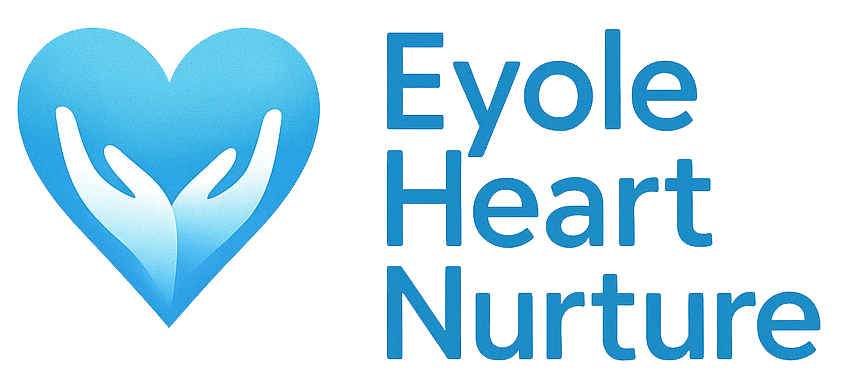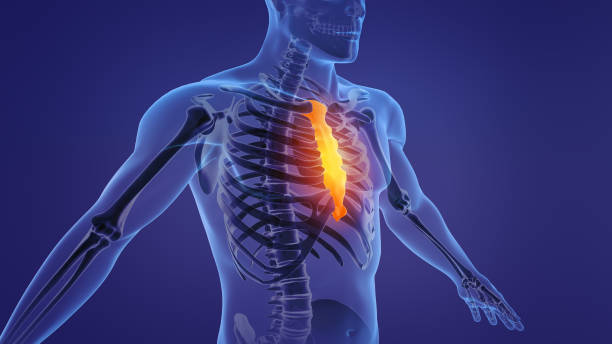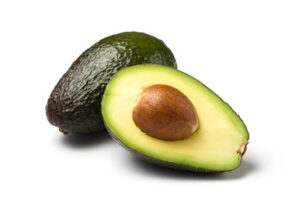James was a healthy man in his mid-40s, but one afternoon he felt a sharp chest pain that stopped him in his tracks. Panic gripped him as he wondered if this was a heart attack or just a muscular issue. His experience is not uncommon — chest pain is frightening, and knowing its cause can save your life. At Eyole Heart Nurture, we understand the physical and spiritual aspects of heart health. This story guides you through telling costochondritis apart from a heart attack.
What Is Costochondritis? A Common Cause of Chest Pain
Costochondritis is an inflammation of the cartilage that connects your ribs to your breastbone (sternum). This area, known as the costochondral junction, is crucial for ribcage structure but can become inflamed due to injury, strain, or infection, causing chest pain that feels sharp or dull. This pain often affects the 4th, 5th, and 6th ribs and can be mistaken for heart problems by millions every year.
Because these joints do not move much, the pain is usually localized and reproducible by pressing the chest, a key clue it may be costochondritis rather than a heart attack. Other names for this condition include chest wall pain or costochondral syndrome. Sometimes, there is swelling with the pain, which is a condition called Tietze syndrome( often happens in teenagers and young adults, and with equal frequency in men and women).
Costochondritis vs. Heart Attack: Spotting the Difference
James’ pain was sharp and worse when he pressed on his chest, a sign of costochondritis. But how can you tell for sure?
Symptoms to Watch For
- Costochondritis pain: Usually sharp, localised to one spot near the ribs, worsens with movement, deep breaths, or coughing, and feels tender to touch.
- Heart attack pain: Feels like pressure, squeezing, or tightness. It may spread to arms, neck, jaw, or back, is not eased by rest or pressing the chest, and often occurs with other symptoms like shortness of breath, sweating, nausea, or dizziness.
Guarding Your Heart Beyond the Physical
Physical health is vital, but so is your spiritual heart. Feelings like worry, anger, and bitterness can affect your emotional and physical well-being. The Bible offers wisdom for maintaining a healthy heart and spirit:
- Philippians 4:6-7: “Do not be anxious about anything, but in every situation, by prayer and petition, with thanksgiving, present your requests to God. And the peace of God, which transcends all understanding, will guard your hearts and your minds in Christ Jesus.”
Managing stress and emotions can reduce detrimental effects on heart health that medical studies increasingly highlight as significant. Remember, when in doubt about chest pain, always get medical evaluation promptly.
Next Steps
At Eyole Heart Nurture, we encourage caring for your heart holistically. Trust in prayer, medical guidance, and God’s word to guard your heart mindfully. Take our free heart test today.
Frequently Asked Questions
How to Differentiate Between Costochondritis and Heart Attack?
Costochondritis pain is sharp, localized, and reproducible by pressing on the affected cartilage near the ribs. Heart attack pain feels like squeezing or pressure, often radiates, and comes with symptoms such as nausea and shortness of breath that do not improve with rest.
What Are Three Weird Symptoms of an Oncoming Heart Attack?
Unusual signs may include unexplained fatigue, lightheadedness, and jaw or back pain without chest discomfort. These “atypical” symptoms should not be ignored.
How Do I Know if My Chest Pain Is Muscular or Cardiac?
Muscular pain usually worsens with movement and touch, whereas cardiac pain is deeper, constant, and associated with other signs like shortness of breath or nausea.
How to Tell if Costochondritis Is Serious?
If the chest pain is severe, persistent, or comes with symptoms like dizziness, shortness of breath, or swelling, you should seek urgent medical care as these may indicate more serious conditions.
Can a Cardiologist Detect Costochondritis?
Yes. Cardiologists use physical exams, ECGs, X-rays, and sometimes MRI or CT scans to exclude heart issues and assess chest wall causes like costochondritis.
What Part of Your Chest Hurts When You’re Having a Heart Attack?
Typically, the centre or left side of the chest, with pain possibly spreading to the left arm, neck, jaw, or back.
How to Know It’s Not a Heart Attack?
If the pain can be precisely located and reproduced by pressing the chest or worsens by movement and deep breaths without other heart symptoms, it is more likely to be costochondritis.
What Part of Your Shoulder Hurts With Heart Problems?
Pain may radiate to the left shoulder, arm, or even upper back during a heart attack.
What Is Commonly Mistaken for a Heart Attack?
Conditions like costochondritis, acid reflux, panic attacks, pulmonary embolism, and Tietze syndrome often mimic heart attack symptoms.





